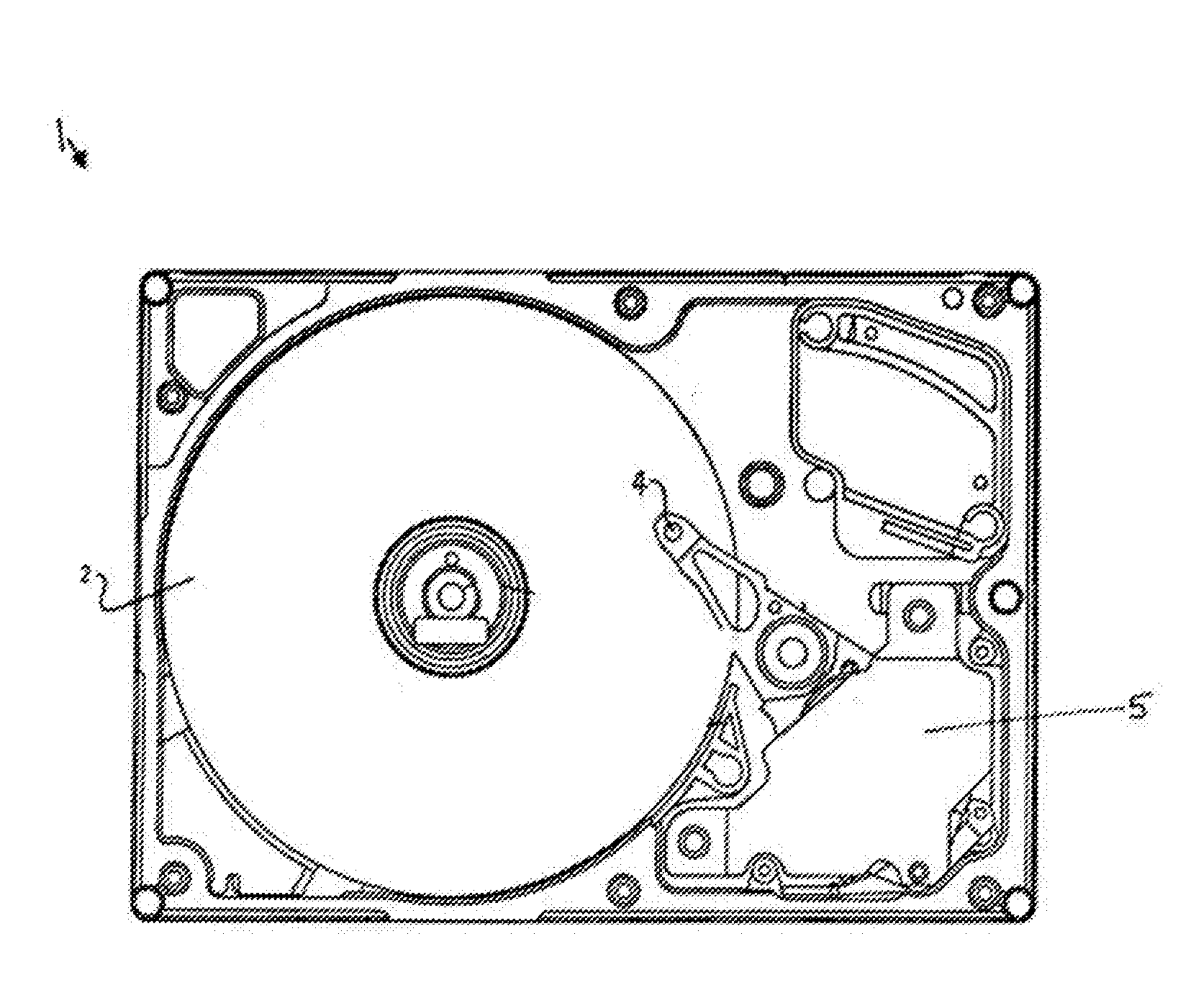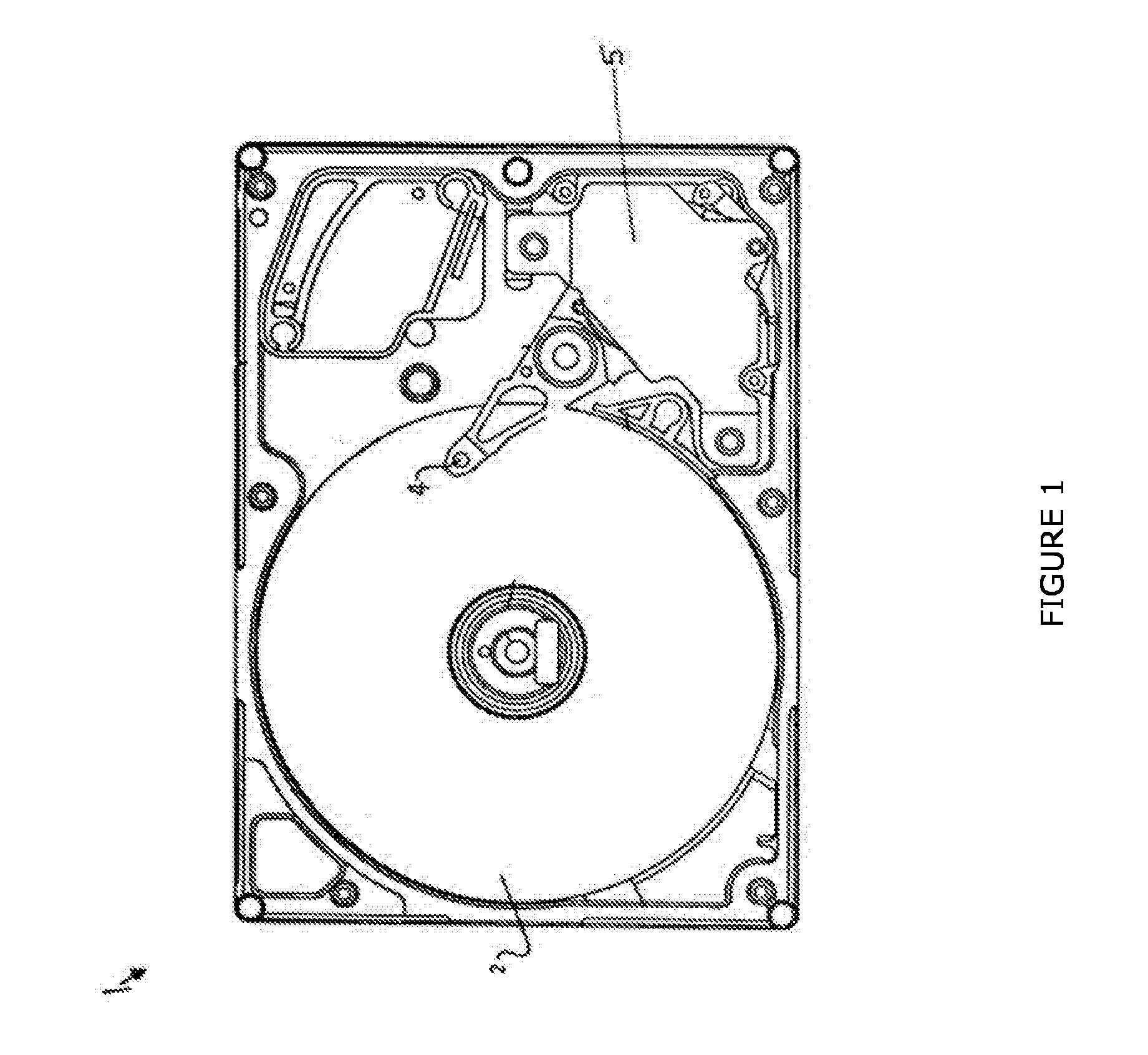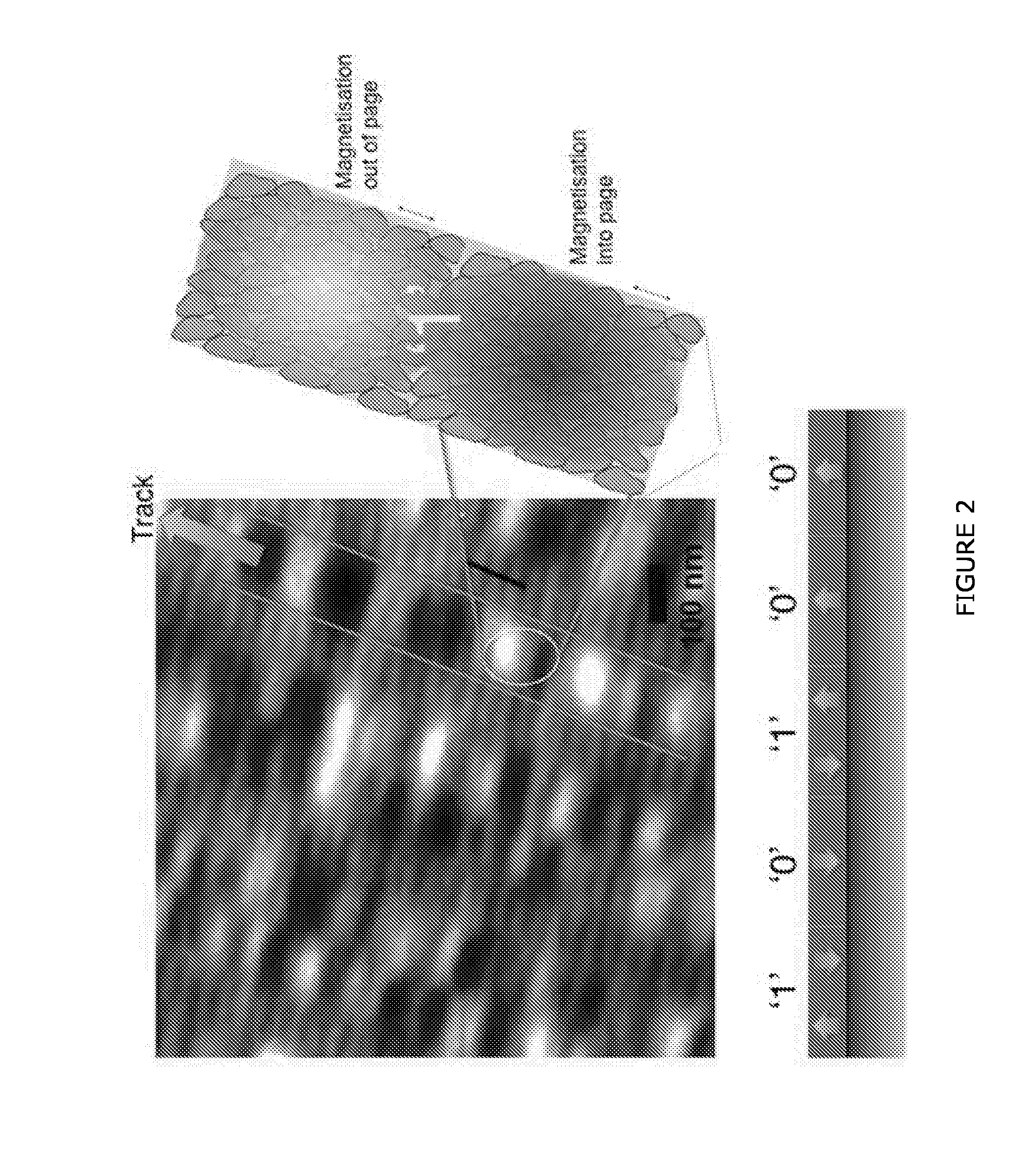Electromagnetic data storage devices
a data storage device and electromagnet technology, applied in the direction of magnetic recording, magnetic materials, heads with composite cores, etc., can solve the problems of inability to achieve, and increasing read back noise, so as to achieve relatively high magnetic hardness of such materials and accelerate the reduction of magnetic moments of compositions. , the effect of increasing the magnetic momen
- Summary
- Abstract
- Description
- Claims
- Application Information
AI Technical Summary
Benefits of technology
Problems solved by technology
Method used
Image
Examples
Embodiment Construction
[0052]Embodiments of the present invention make use of a write head that has an enhanced magnetic structure to provide improved magnetic field properties. Such enhanced properties enable smaller magnetic nanoparticles to be used in a storage medium, which leads to enhanced data storage capacity, as will be described below.
[0053]In the following description, reference will be made to magnetic nanoparticles. It is to be understood that these references are to particles that may be elemental magnetic nanoparticles of a single element, an alloy of more than one element, or a combination thereof. The single element, alloy or combination may include embedded gas atoms and / or molecules. Example materials for the elemental nanoparticles include iron (Fe) and Cobalt (Co).
[0054]Alternatively, the magnetic nanoparticles may be structured nanoparticles having a core of a core material and a shell layer covering the core, the shell layer being of shell material, different to the core material. A...
PUM
| Property | Measurement | Unit |
|---|---|---|
| critical size | aaaaa | aaaaa |
| sizes | aaaaa | aaaaa |
| diameters | aaaaa | aaaaa |
Abstract
Description
Claims
Application Information
 Login to View More
Login to View More - R&D
- Intellectual Property
- Life Sciences
- Materials
- Tech Scout
- Unparalleled Data Quality
- Higher Quality Content
- 60% Fewer Hallucinations
Browse by: Latest US Patents, China's latest patents, Technical Efficacy Thesaurus, Application Domain, Technology Topic, Popular Technical Reports.
© 2025 PatSnap. All rights reserved.Legal|Privacy policy|Modern Slavery Act Transparency Statement|Sitemap|About US| Contact US: help@patsnap.com



